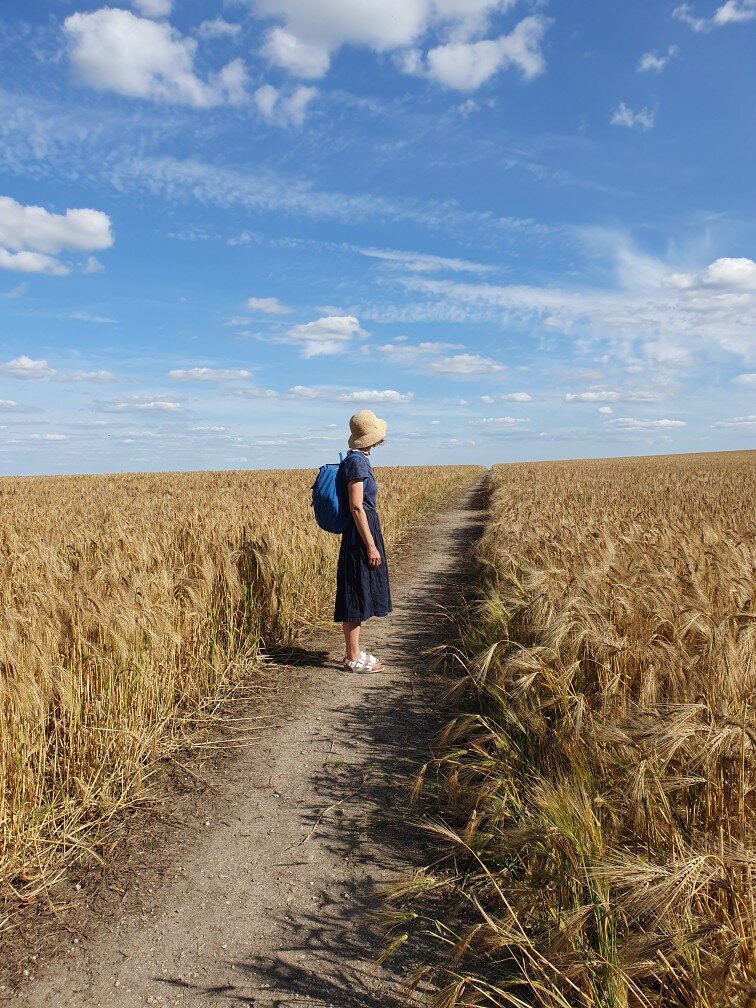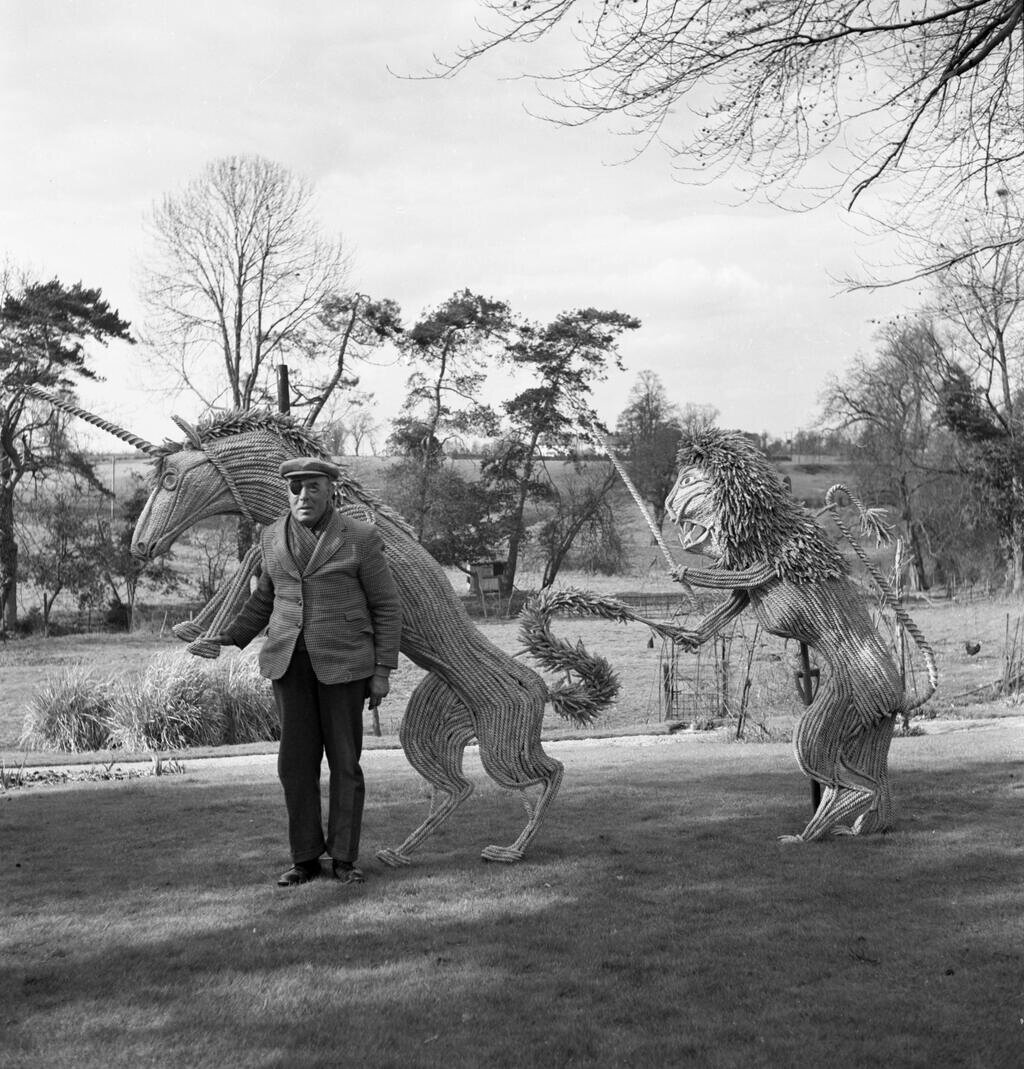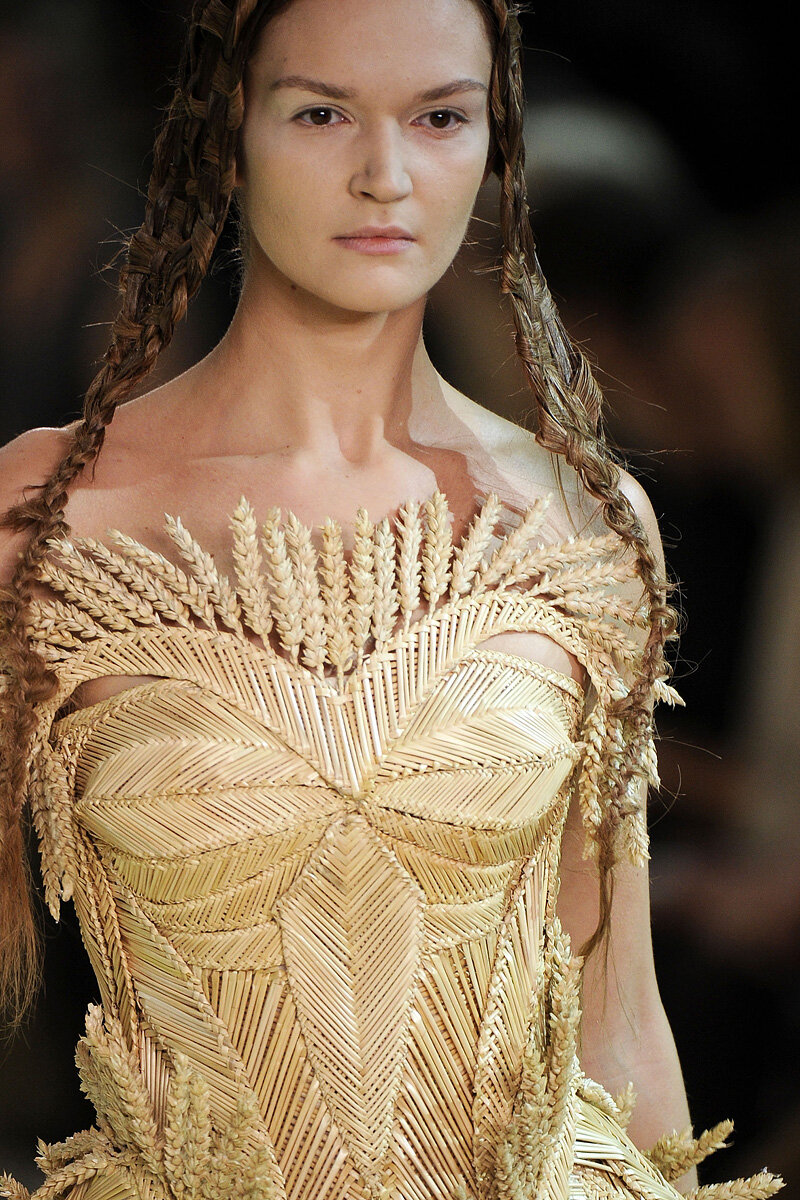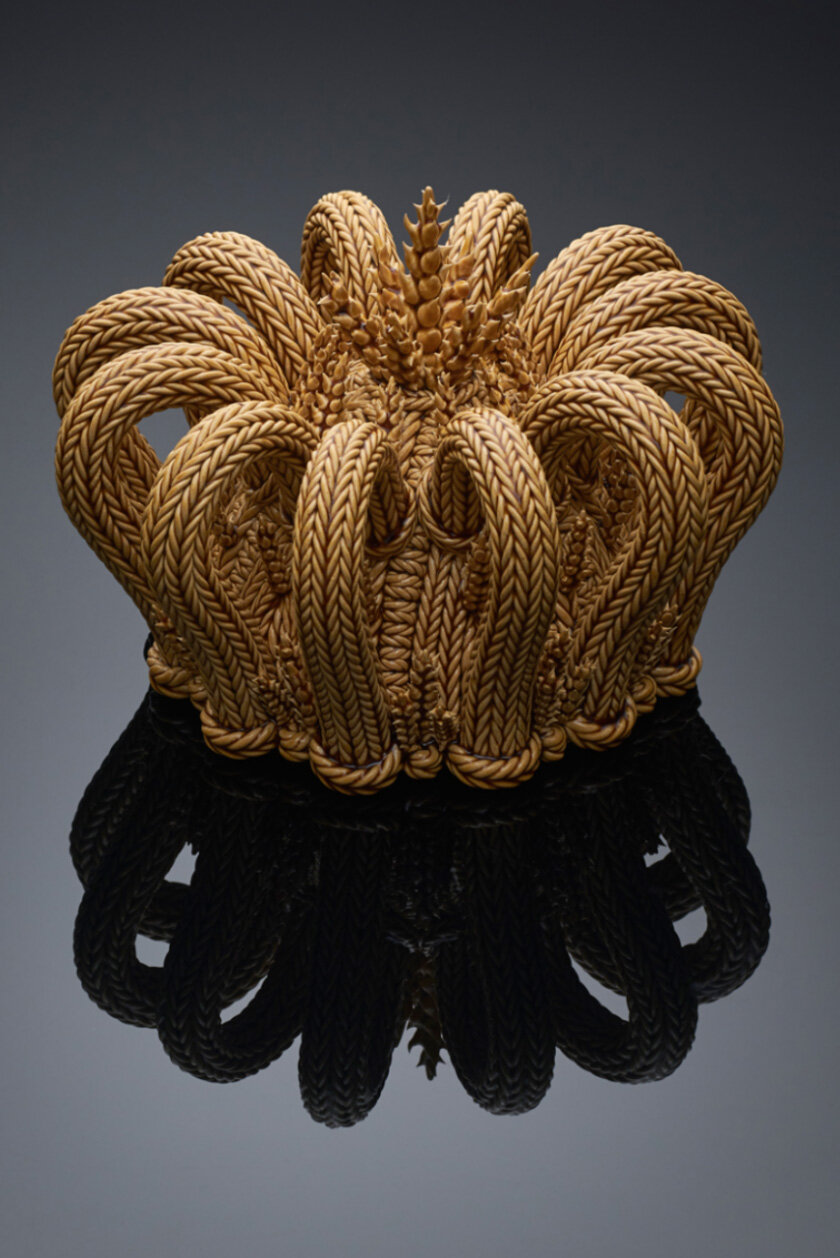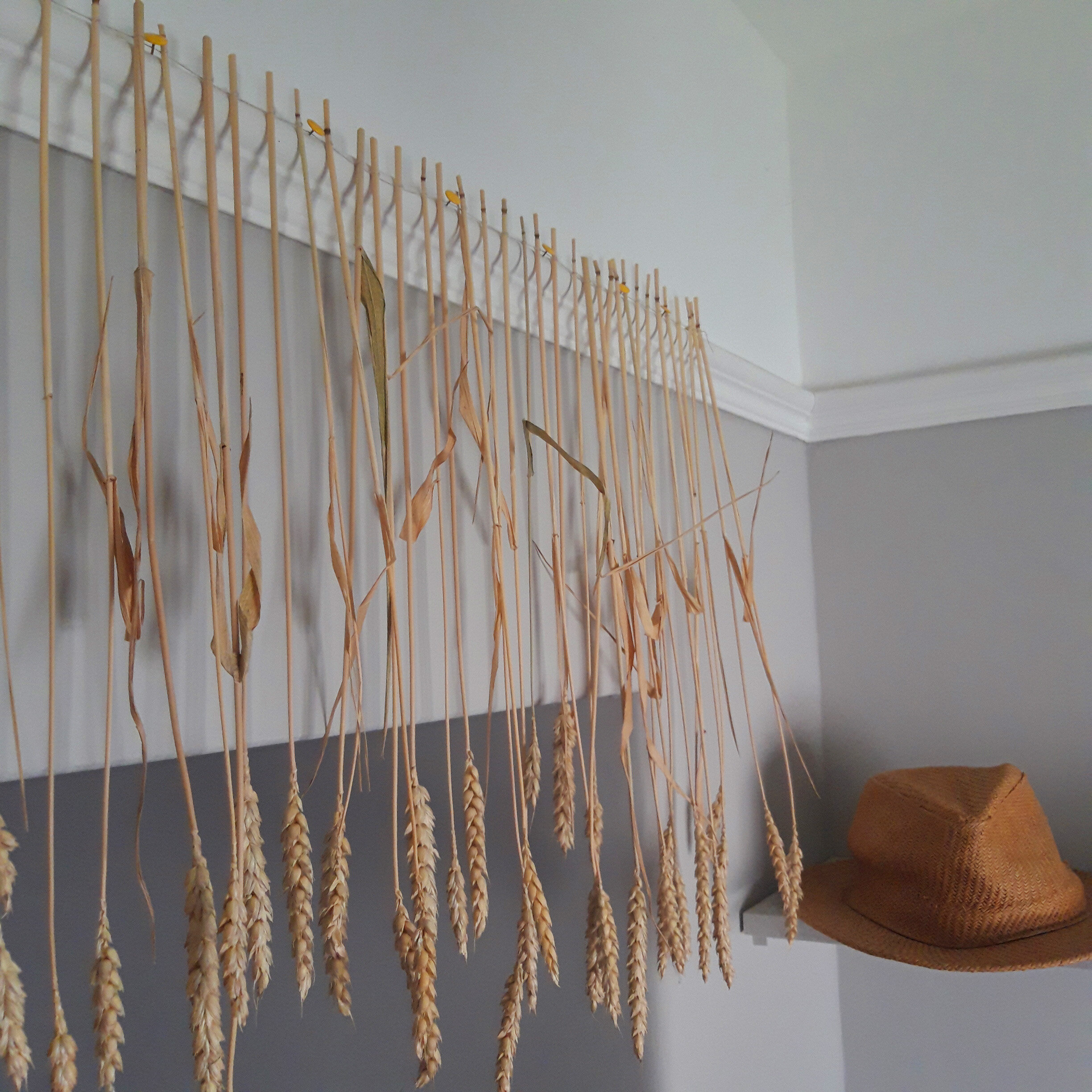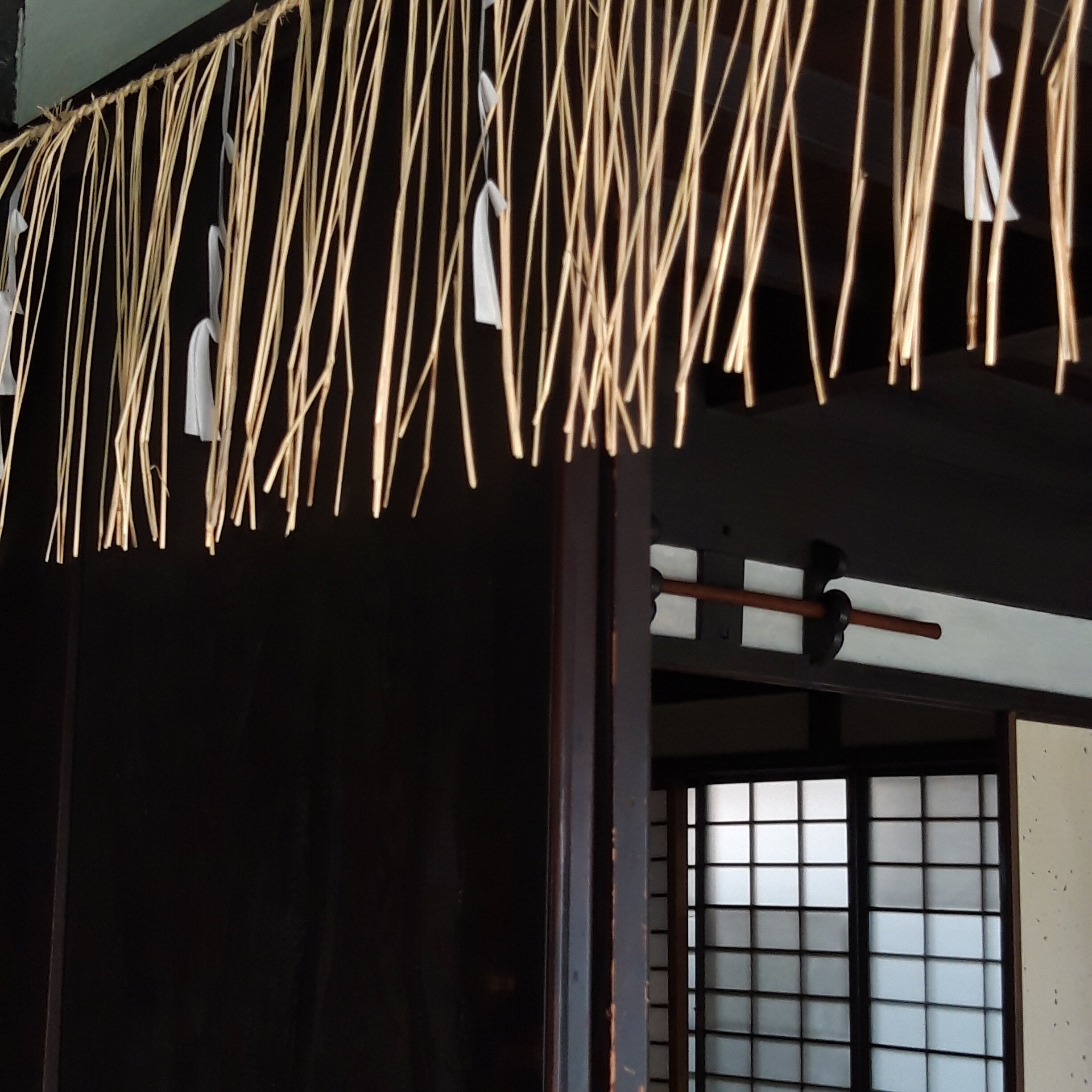Hello Dolly
I’ve long had a soft-spot for corn dollies - those staples of WI meetings and village fetes. They hold a lot of nostalgic memories and connotations, and feel a small but significant part of my cultural landscape. Strange then, that it has taken until now to have a go myself.
The process is really a sort of plaiting. It is very quick to get to grips with and hugely satisfying to do. Here below are two little ‘Countryman’s Favours’ on the right and on the left is a classic spiralling dolly. As you might expect dollies come in a huge variety of regional types - from Northamptonshire horns to Herefordshire fans.
Corn dollies date back to pre-Christian agrarian rituals, and are found in different guises in almost all ancient grain-growing societies. They are, of course, associated with the harvest and with ensuring the success of the next year’s crop. There are huge variety of customs around the gathering of the harvest and some wonderful insights in George Ewart Evans’ account of rural Suffolk life in the twentieth century - Ask the Fellows who Cut the Hay - an evocative glimpse into to a disappearing life, to which Ronald Blythe’s Akenfield owes a debt.
Much is written about harvest customs in James MacDonald Fraser’s late nineteenth century tour de force The Golden Bough, and from what I can glean English folklore held that the ‘Corn Mother’ or spirit lived in the fields of grain - you might even catch a glimpse of her in the corner of your eye as the wind blows across the crops. Come harvest-time as the crops are gathered she loses her home, and the last standing ears of grain from a field were fashioned into a structure where she would shelter while the fields were bare. The dolly was hung in a barn over the winter and then ploughed back into the fields in the spring to release the corn spirit to do her magic once again as the new grain was sewn.
My dollies are made with a long-stemmed organic wheat - bought as a sheaf from an organic farm in Derbyshire. I was guided through these simple first steps by dolly-doyenne Minnie Lambeth whose 1974 book in the Shire series was an inspired present from my wonderful studio manager Holly. The steps and the changing positions of the straws as you construct the dolly are described as point of the compass - in itself a charmingly poetic term of reference.
Corn traditionally of course refers to all grain, as opposed to sweet-corn or maize. Here below are a few stalks of grain I gleaned from field margins in Wiltshire the other week. On the left are oats, in the middle is spring barley and on the right is wheat. Spring barley is mainly destined for the brewing industry and much of the barley we grow in the UK is exported to European breweries. Oats are of course generally grown as a food and fodder crop, but regular readers of this journal may recall the wonderful Orkney chairs which are made with oat-straw backs. You can read more about Orkney chairs here.
And here I am, channelling that unsung fashion icon Holly Hobbie in a field of ripening bearded wheat, high up on the north Wiltshire chalk downs. Thank you to Peter for the photo.
As I say - the traditions of corn-plaiting and decorations occur all over the world. In India rice straw decoration are traditionally hung in the home of newly-weds - perhaps to aid fertility? The beautiful rice straw knot below left is from Japan. Symbolic decorations or ‘shimekazari’ such as these were often hang over a lintel at new year. The wonderful Momosan shop on Wilton Way has a number of beautiful pieces like this one.
The beautiful delicate structure on the right is a traditional Lithuanian straw sculpture, or ‘šiaudinukai’. Chandeliers or ‘sodas’ such as these were often hung at weddings to bring fertility and prosperity.
Perhaps the greatest English master of the art-form is Fred Mizen. Fred was from a long, and continuing line of ‘long straw thatchers’ in Great Bardfield and became celebrated as something of a national treasure when he fashioned an enormous corn Lion and Unicorn for the Festival of Britain. Here he is below, with the mythical beasts, sporting his distinctive eye-patch. There is a charming clip of Pathé newsreel with Fred making a traditional dolly - wonderful to imagine him rubbing shoulders with all those other creative Great Bardfield folk.
And of course the tradition continues. On the left below is an exquisite piece from Alexander McQueen’s spring 2011 show. And the wonderful crown on the right is by Danish artist Malene Hartmann Rasmussen.
As a final postscript -
Last year in Kyoto, I saw a number of traditional rice-straw decorations at the wonderful house of ceramicist Kanjiro Kawai. Amongst them were these beautiful fringes of rice straw, combined here with traditional Shinto paper ‘lightning’ strips (below right). The other day, I made my own version which hangs at the entrance to our home. I couldn’t say exactly what my garland symbolizes, but perhaps it is something about a connection to growing things, and a vote of thanks for what we have.
You can read more about Kanjiro Kawai’s house here.
Image credits:
Japanese shimekazari - Momosan shop
Malene Hartmann Rasmussen crown - Messums
Me in a field - Peter Pritchard











